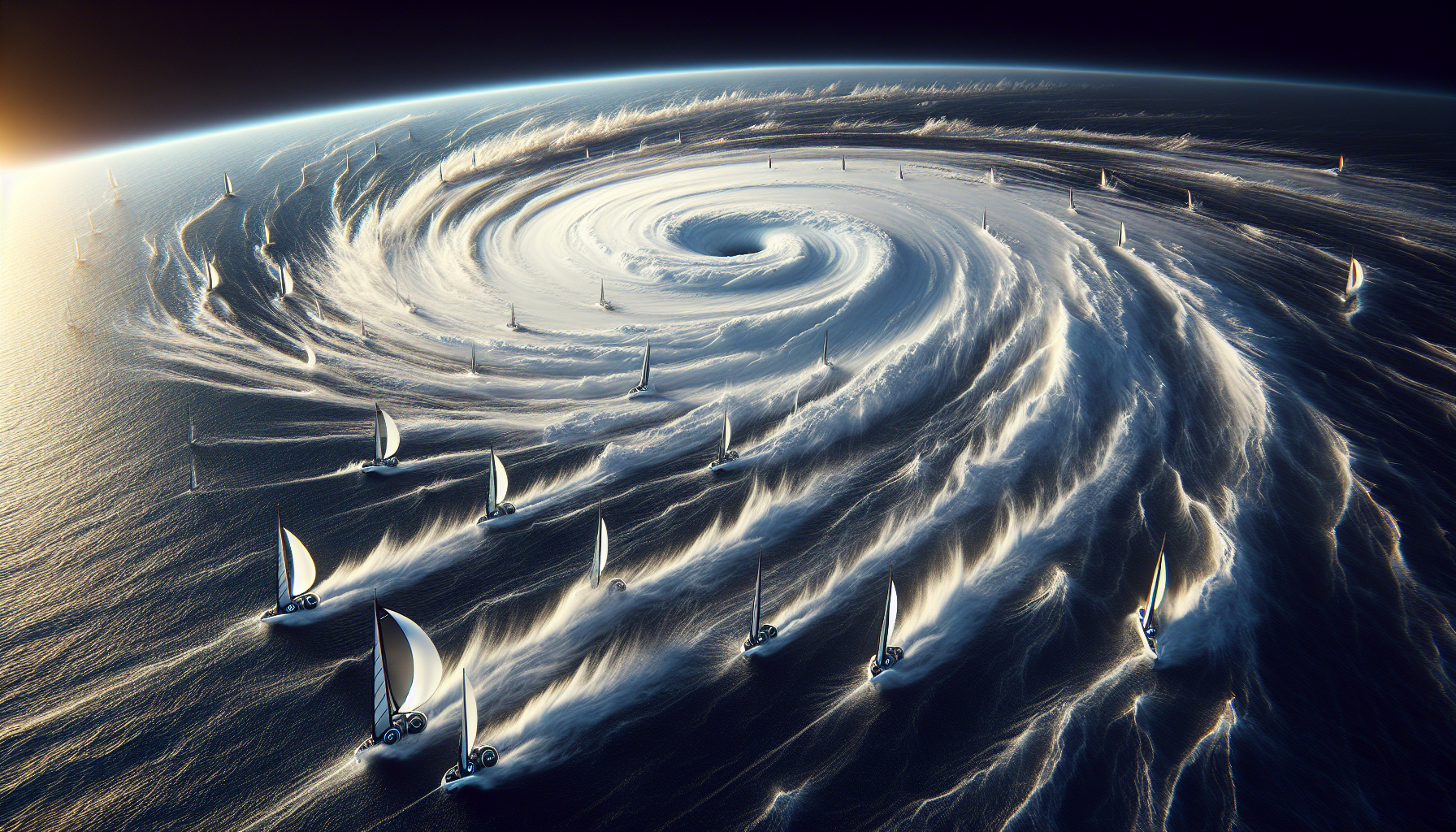
Riding the Storm: How AI-Powered Robot Sailboats Are Revolutionizing Hurricane Prediction
The Old Way of Saying Hello to a Hurricane
Imagine this: a Category 4 hurricane is churning in the Atlantic, a monstrous swirl of wind and water visible from space. For decades, our best method for understanding what was happening inside that beast was to send a team of brave (or crazy) hurricane hunters flying directly into its eye. While heroic, this method is dangerous, expensive, and gives us only brief snapshots of a storm’s intensity. We get crucial data, but it’s like trying to understand a city by looking at a single photograph taken from a speeding car.
In our hyper-connected, data-driven world, this approach feels archaic. We demand real-time updates, predictive models, and pinpoint accuracy. For coastal communities, entrepreneurs with supply chains, and tech professionals managing cloud infrastructure, knowing a hurricane’s precise path and intensity isn’t just a convenience—it’s a critical necessity for safety and operational continuity. The question has always been: how do we get that granular, persistent data from the most dangerous places on Earth without risking human lives?
The answer, it turns out, isn’t in the sky. It’s riding the waves.
Enter the Saildrones: The Autonomous Sentinels of the Sea
Meet the new generation of storm chasers: autonomous, uncrewed surface vehicles (USVs), or more simply, robot sailboats. These aren’t your typical remote-controlled toys. They are sophisticated, seven-meter-long vessels packed with an arsenal of sensors and powered by the very elements they are built to study: the wind and the sun. This is where cutting-edge innovation meets raw, natural power.
These “Saildrones,” developed by pioneering startups in the marine tech space, can be deployed for months at a time, navigating the open ocean on their own. They are the embodiment of modern automation, sent on missions to the heart of forming hurricanes. They don’t just survive these monstrous storms; they thrive in them, collecting a firehose of data that was previously unimaginable. They measure everything: wind speed and direction, barometric pressure, water temperature and salinity, wave height, and more. They are, in essence, floating weather stations on a mission.
The Secret Sauce: A Symphony of Software, AI, and Cloud Computing
Having a durable robot is one thing, but turning its observations into life-saving predictions requires a powerful technological backbone. This is where the magic of modern software development comes into play, creating a seamless pipeline from ocean to analyst.
1. Data Ingestion and the Power of the Cloud
A Saildrone in the middle of a hurricane is generating data every single second. This information can’t just sit on a local hard drive. It’s transmitted via satellite in near real-time to a secure cloud infrastructure. This cloud-native approach is essential. It allows scientists, forecasters, and government agencies from around the world to access the same dataset simultaneously, fostering collaboration and accelerating insights. For many of these organizations, the data platform is delivered as a SaaS (Software as a Service) model, providing powerful analytics tools without the need for massive on-premise hardware.
2. Artificial Intelligence and Machine Learning at the Helm
This is where the real revolution is happening. The sheer volume and velocity of data from these drones are too much for human analysts to process alone. This is a perfect job for artificial intelligence (AI). Sophisticated machine learning (ML) models are trained on historical storm data and fed the new, high-resolution data from the Saildrones.
What do these ML algorithms do?
- Pattern Recognition: The AI can detect subtle changes in ocean temperature or pressure that are precursors to rapid intensification—a phenomenon that has historically been very difficult to predict.
- Predictive Analytics: By combining the drone data with satellite imagery and atmospheric models, the ML systems can run thousands of simulations to forecast a hurricane’s track and intensity with a much higher degree of confidence.
- Data Fusion: The AI excels at fusing disparate data sources—from the sea surface, the atmosphere, and satellites—into a single, coherent model of the storm.
The programming behind these models is incredibly complex, often involving neural networks and deep learning techniques. For developers and data scientists, this field represents a thrilling frontier where code can have a direct and profound impact on public safety.
A Critical Blind Spot: The Cybersecurity of Storms
As we increasingly rely on autonomous systems for critical infrastructure and data collection, a new vulnerability emerges: cybersecurity. Imagine the chaos if


